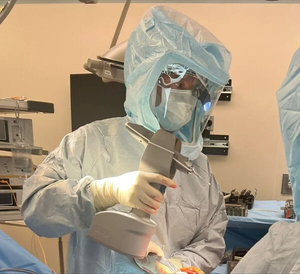Originally Published MDDI April 2005NEWSTRENDS Maria Fontanazza
April 1, 2005
Originally Published MDDI April 2005
NEWSTRENDS
|
Walker hopes industry will be encouraged |
An agreement between HHS and several federal agencies has established an outline aimed at giving patients faster access to new medical technologies. A key goal of the pact is to improve communication between the device industry and the government.
With the new agreement, “medical device manufacturers will have a better federal system that enables them to get their product to market,” says Angela Hight Walker, PhD. Walker is a research partnerships advisor to the director at the National Institute of Standards and Technology (NIST; Gaithersburg, MD). “Hopefully they will see this as a move in the right direction and will be anxious to see the next step,” Walker adds. She thinks industry will see some action within fiscal year 2005.
Agencies involved include NIST, the National Science Foundation, the Department of Education, and the Army Medical Research and Material Command.
The memorandum of understanding, titled Moving Medical Innovations Forward, has four main parts: strategic, policy, and program coordination; educational and informational initiatives; research initiatives; and streamlining the pathway from discovery to delivery. The educational initiative will involve workshops and conferences. Through these events, device industry members will have a platform to share ideas, express concerns, and pinpoint areas where they want more government presence. “There will be much more communication between industry, patient advocacy groups, and the federal government,” says Walker. She adds that much of the document has to do with better coordination inside HHS. It is also aimed at interacting more effectively with the agencies that play a key role in medical innovation.
Other initiatives address such concerns as research efficiency, reimbursement, and regulatory issues. “This sets the stage to go forward. Sometimes in the government you need to have an overarching umbrella document, and then underneath there are more detailed [initiatives],” says Walker. “For manufacturers, it's good to know that the federal government is recognizing the importance of medical innovations and trying to facilitate getting these technologies out to the public.”
The full text of the agreement can be viewed on-line at www.hhs.gov/reference/medicalinnovations.shtml.
Copyright ©2005 Medical Device & Diagnostic Industry
About the Author(s)
You May Also Like



